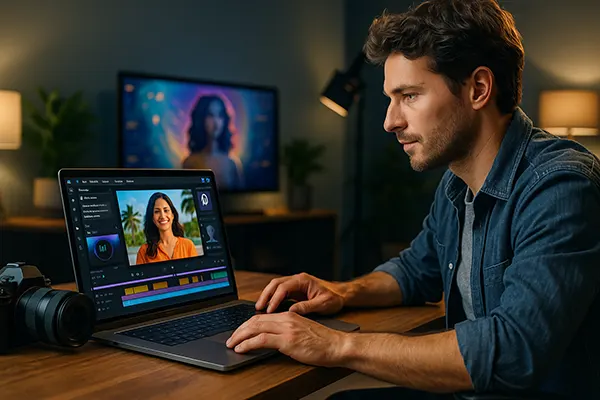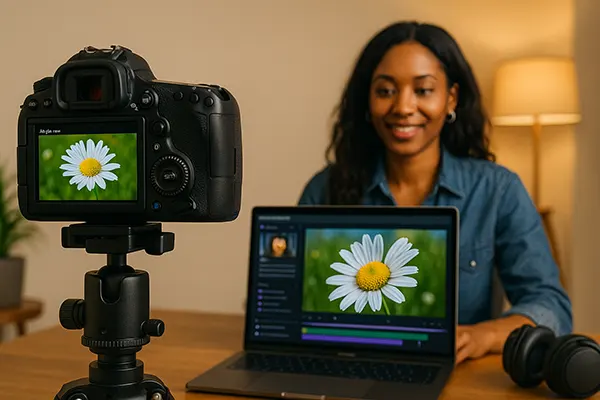
AI Freelancing in 2025: Creating Client-Requested Videos
Artificial intelligence has transformed freelancing, making video creation one of the most in-demand services of 2025. Clients now expect not just visual quality but also tailored storytelling, quick turnaround times, and innovative use of AI tools. This shift has given freelancers new opportunities to monetise their skills, whether they work independently or as part of creative teams. Understanding the dynamics of AI-driven video production is essential for anyone looking to succeed in this fast-growing market.
AI Tools Shaping Video Freelancing
The range of AI-powered video tools available today is extensive. Platforms such as Runway, Synthesia, and Pika Labs allow freelancers to generate entire scenes, realistic characters, and even multilingual voiceovers. These tools are being continuously updated to provide higher resolution, smoother motion, and more natural dialogue delivery, meeting the increasing expectations of both businesses and audiences.
Freelancers no longer need to rely solely on expensive editing suites. AI systems can automatically edit footage, sync audio, and even analyse viewer engagement to suggest improvements. This makes high-quality production accessible for small businesses and independent creators, broadening the client base for freelancers.
In addition, AI reduces production timelines. A task that once required weeks of editing can now be accomplished within hours. This efficiency is a major selling point for clients who require content for social media, advertising, or internal training materials.
Learning to Use AI Effectively
While the technology is powerful, its real value lies in how freelancers apply it. Successful professionals invest time in learning prompt engineering, refining outputs, and combining AI tools with traditional editing skills. This balance ensures final products are creative and polished rather than generic.
Freelancers also need to stay updated on the rapid development of AI applications. New features, such as automated scene adaptation for different social media formats or improved lip-syncing in multiple languages, can give a competitive edge. Continuous learning is therefore not just beneficial but necessary.
Moreover, ethical use of AI is increasingly important. Clients want assurance that their content will not involve copyright violations or misrepresentation. Transparent workflows and respecting intellectual property rights enhance trust and long-term partnerships.
Monetisation Strategies for AI Video Freelancers
In 2025, freelancers can monetise AI-driven video services in several ways. Many offer package-based pricing that includes scripting, generation, editing, and final delivery. Others provide subscription-based services for companies requiring regular content, such as weekly marketing videos or product explainers.
Freelancers who specialise in niche markets—such as educational content, real estate presentations, or e-commerce product showcases—can command higher rates. Businesses prefer working with experts who understand the unique needs of their industries and can produce tailored solutions.
Another emerging trend is licensing AI-generated video assets. Creators can sell custom animations, backgrounds, or stock-like video clips multiple times, creating a passive income stream. This model complements direct client work and provides greater financial stability.
Building a Client Base
Securing long-term clients is one of the most effective ways to maintain steady income. Freelancers achieve this by maintaining strong communication, meeting deadlines, and adapting to feedback. Positive client experiences often result in referrals and repeat business.
Establishing a personal brand is equally important. Portfolios showcasing AI-assisted projects, along with testimonials, strengthen credibility and attract new opportunities. Many freelancers also use platforms such as Upwork, Fiverr, or LinkedIn to highlight their expertise and services.
Networking within industry communities also plays a role. Engaging in AI-focused forums, webinars, or local meetups helps freelancers stay visible and informed about market trends. These connections often lead to collaboration and new projects.

Challenges and Future Outlook
Despite the opportunities, AI video freelancing comes with challenges. One concern is oversaturation, as more professionals enter the market with similar offerings. Standing out requires not only technical skill but also creativity and personalisation.
There are also technical limitations. Although AI has advanced significantly, it cannot always produce complex or emotionally nuanced videos without human input. Freelancers must therefore continue refining their artistic judgment and storytelling abilities.
Looking ahead, the demand for AI-powered content will only increase. Brands and organisations will seek personalised video experiences at scale, from interactive ads to dynamic e-learning modules. Freelancers who combine AI expertise with creativity will remain highly sought after in this evolving field.
Long-Term Career Development
Freelancers aiming for sustainable growth should focus on diversification. Expanding skills to include areas such as AI voiceover creation, motion graphics, or interactive video design can broaden service offerings and reduce dependency on a single niche.
Building partnerships with agencies and businesses can also provide stability. Many organisations prefer long-term collaboration rather than one-off projects, giving freelancers a predictable income stream while allowing them to refine their expertise within specific industries.
Finally, freelancers who position themselves as consultants—advising businesses on how to implement AI video solutions—can capture a premium segment of the market. In 2025, knowledge combined with execution is one of the most valuable assets in freelancing.
